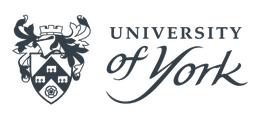Mesolithic Research and Conservation Framework of England
Edward Blinkhorn, Nicky Milner, 2014. https://doi.org/10.5284/1028202. How to cite using this DOI
Data copyright © Edward Blinkhorn, Prof Nicky Milner unless otherwise stated
This work is licensed under the ADS Terms of Use and Access.
Primary contact
Prof
Nicky
Milner
Department of Archaeology
University of York
King's Manor
Exhibition Square
York
YO1 7EP
England
Tel: 01904 323940
Fax: 01904 323902
Resource identifiers
- ADS Collection: 1632
- DOI:https://doi.org/10.5284/1028202
- How to cite using this DOI
Overview
The framework has been produced by undertaking broad-ranging consultation across the sector using a dedicated website to disseminate information, an on-line discussion forum to generate interactive debate, email correspondence, and a meeting to convene a group of interested experts from across the sector. Other national, regional and local framework documents were also used to help assess the resource and set objectives.
The framework process was composed of three parts, as set out by Olivier (1996) in Frameworks For Our Past. The first part was a Resource Assessment: a statement of the current state of knowledge and a description of the archaeological resource. The second part was a research agenda: a list of the gaps in that knowledge, of work which could be done, and of the potential for the resource to answer questions. This was discussed at the expert meeting and formed the basis for the final part of the process, the production of the Research and Conservation Framework, which sets out key issues and priorities for future work as well as methods and approaches for achieving these.
However, the project was also designed to ensure monitoring of progress against the framework objectives: we have created a wiki which allows updates to be made against each of the objectives set out in the Framework document.
In addition, we have designed this ADS resource to become a hub for Mesolithic projects. By visiting the Mesolithic hub it will be possible to gain access to PhD research projects, excavation information, databases and documents. Some of these data draw upon existing ADS archives; however, it is also possible to develop the resource further via ongoing contributions from the community.
Reference
Olivier, A. (1996) Frameworks for our Past. London: English Heritage.







